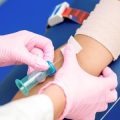Introduction to the Evolving Landscape of Aesthetic Medicine in the UK
The landscape of aesthetic medicine in the United Kingdom has undergone a remarkable transformation in recent years, reflecting both advances in medical technology and shifting cultural attitudes towards cosmetic enhancement. British patients are increasingly seeking subtle, natural-looking results that refresh their appearance without drastic change, propelling the popularity of non-surgical procedures such as Botox and similar injectables. This growing focus on minimally invasive treatments is not only fuelled by a desire for quick recovery and discreet interventions, but also by a broader societal acceptance of aesthetic enhancements as part of routine self-care. As a result, clinics across the UK are witnessing a surge in demand for tailored solutions that deliver rejuvenation with minimal downtime, making Botox and other non-surgical techniques central to contemporary British beauty standards.
2. Cutting-Edge Trends in Botox Treatments
Botox continues to evolve rapidly, with new technology and refined techniques reshaping the non-surgical aesthetics landscape across the UK. Leading experts are now embracing innovative approaches to enhance both results and patient safety, as well as tailoring treatments for a diverse British clientele. The following table summarises some of the most notable advancements in contemporary Botox practice:
| Trend | Description | UK-Specific Considerations |
|---|---|---|
| Emerging Uses | Beyond smoothing wrinkles, Botox is now used for jawline slimming, migraine relief, excessive sweating (hyperhidrosis), and even improving skin texture. | Increasing demand in urban centres like London and Manchester; focus on discreet, natural enhancements that align with British tastes. |
| Personalised Dosing | Practitioners are moving away from a “one-size-fits-all” approach. Dosing is now customised based on individual muscle strength, facial symmetry, and desired outcomes. | Consideration of varying skin thickness and muscle activity common among different UK ethnicities and age groups. |
| Treatment Mapping & Precision | Advanced digital imaging tools help map facial anatomy for more precise injection placement and improved safety. | Preferred by leading clinics in the UK to minimise downtime and ensure subtlety, which is highly valued by British patients. |
| Combination Therapies | Botox is frequently combined with dermal fillers, skin boosters, or laser treatments for holistic rejuvenation strategies. | Popular among clients seeking comprehensive yet minimally invasive solutions tailored to UK lifestyle demands. |
UK practitioners are also adapting techniques to suit the unique needs of local skin types and aesthetic preferences. For example, many clients prefer a refreshed but not “frozen” appearance—often described as “polished but natural.” As such, micro-dosing (“Baby Botox”) has surged in popularity. This trend involves administering smaller amounts of product in targeted areas for subtle enhancement and prevention rather than dramatic change. Furthermore, cultural emphasis on privacy means many treatments are designed for minimal recovery time, allowing patients to return swiftly to their daily routines without visible signs of intervention. These cutting-edge trends signify a shift towards greater personalisation and sophistication in non-surgical rejuvenation throughout the UK.

3. Innovations in Non-Surgical Rejuvenation Beyond Botox
While Botox continues to play a pivotal role in aesthetic medicine, leading UK experts highlight a marked surge in alternative injectables and non-invasive rejuvenation procedures across British clinics. The landscape is rapidly evolving, with patients increasingly seeking tailored solutions that extend beyond wrinkle relaxation.
Dermal Fillers: Sculpting and Enhancing Natural Beauty
Dermal fillers have gained exceptional popularity among British clients aiming for subtle yet effective facial enhancement. Composed mainly of hyaluronic acid—a substance naturally found in the skin—these injectables are used to restore lost volume, contour facial features, and smooth out deeper lines. British practitioners emphasise the artistry involved, focusing on natural-looking results that respect the patient’s unique anatomy and expressions.
Skin Boosters: Hydration and Radiance from Within
Another significant innovation is the rise of skin boosters, which offer deep hydration and revitalisation without altering facial contours. These treatments involve micro-injections of lightweight hyaluronic acid formulations, designed to improve skin texture, elasticity, and luminosity. Many UK clinics now offer these as part of holistic skin health programmes, appealing to those who prefer a fresher appearance over dramatic changes.
Energy-Based Treatments: Technology-Driven Youthfulness
Technological advancements have also given rise to a new generation of energy-based treatments such as radiofrequency, ultrasound, and laser therapies. These modalities target different layers of the skin to stimulate collagen production, tighten tissue, and address pigmentation or textural irregularities. UK experts note that these treatments are increasingly requested for their minimal downtime and impressive results, fitting seamlessly into busy urban lifestyles.
This diversification in non-surgical rejuvenation reflects a broader shift towards personalised care, with British clinics tailoring treatment plans that combine multiple modalities for optimal outcomes. As public understanding grows and technology advances, the trend towards minimally invasive options shows no sign of slowing down.
4. The Rise of Holistic and Preventive Approaches
In recent years, the UK’s leading aesthetic practitioners have observed a marked shift towards holistic and preventive approaches in non-surgical rejuvenation. No longer is Botox seen as a standalone solution for erasing lines; instead, it is increasingly integrated with broader skin health strategies, lifestyle optimisation, and pre-emptive care to deliver more natural and enduring results.
Integrating Aesthetics with Skin Health
Top UK experts emphasise that successful facial rejuvenation begins with foundational skin health. This involves a comprehensive assessment of each patient’s skin type, hydration levels, and unique concerns before considering injectables. Treatments such as medical-grade skincare regimens, microneedling, and light therapies are often recommended alongside Botox to enhance overall outcomes.
Lifestyle Factors: Beyond the Clinic
The role of lifestyle cannot be underestimated in modern UK aesthetics. Practitioners now routinely discuss nutrition, sleep hygiene, stress management, and sun protection with their clients. By addressing these factors, patients not only prolong the effects of non-surgical treatments but also support long-term skin vitality. The table below highlights key lifestyle recommendations endorsed by leading British experts:
Lifestyle Factor |
Recommended Practice |
|---|---|
| Nutrition | Adopt a diet rich in antioxidants and omega-3 fatty acids |
| Sun Protection | Daily use of broad-spectrum SPF 30 or higher |
| Sleep Hygiene | Aim for 7-9 hours of quality sleep per night |
| Stress Reduction | Incorporate mindfulness, yoga, or regular exercise routines |
| Hydration | Maintain adequate water intake throughout the day |
Preventative Care: Treating Before Ageing Shows
A key trend among UK aesthetic specialists is the move towards preventative treatment plans. Rather than waiting for wrinkles to develop fully, younger patients—often in their late twenties or early thirties—are opting for ‘baby Botox’ and other minimally invasive procedures as a means to delay visible signs of ageing. This subtle approach helps preserve natural facial movement while maintaining youthful contours over time.
Expert Insights on Holistic Rejuvenation in the UK
According to Dr. Sarah Tonks, renowned London-based aesthetic doctor, “Combining medical-grade skincare with targeted injectables and healthy lifestyle choices allows us to achieve truly bespoke results that evolve with our patients’ needs.” Her perspective reflects a growing consensus: the future of non-surgical rejuvenation lies in personalised, integrative care that considers both appearance and wellbeing.
5. Safety, Regulation, and Patient Education in the UK Context
The safety and regulation of Botox and non-surgical rejuvenation treatments remain a key focus within the UK’s aesthetic industry, reflecting both patient demand and professional responsibility. In recent years, the UK government and leading professional bodies have stepped up efforts to ensure rigorous oversight of cosmetic procedures, recognising the need to protect patients from unqualified practitioners and substandard products.
UK Regulatory Environment: Setting the Standard
The UK boasts one of the most robust regulatory frameworks for non-surgical aesthetics worldwide. The Care Quality Commission (CQC) oversees clinics offering medical treatments, while the General Medical Council (GMC), Nursing and Midwifery Council (NMC), and General Dental Council (GDC) set professional standards for practitioners. Legislative changes such as the Botulinum Toxin and Cosmetic Fillers (Children) Act 2021 further restrict access to under-18s, illustrating ongoing commitment to patient safety.
The Importance of Practitioner Qualifications
Expert voices consistently highlight that practitioner qualifications are central to safe outcomes. Leading UK experts advocate for treatment exclusively by medical professionals—doctors, dentists, or nurses with specialist training in aesthetics. This ensures not only technical skill but also the ability to manage complications, offer sound clinical judgement, and deliver care with ethical integrity. Some clinics now voluntarily pursue accreditation from recognised bodies such as Save Face or the Joint Council for Cosmetic Practitioners (JCCP), providing additional reassurance to patients.
Patient Education: Building Realistic Expectations
Education is emerging as a critical pillar in modern aesthetic practice. UK experts stress that informed consent goes beyond paperwork; it involves transparent discussion about what treatments can realistically achieve, potential risks, aftercare requirements, and the importance of choosing reputable providers. Many clinics now invest in digital resources—videos, webinars, and online guides—to empower patients to make well-informed decisions. This educational emphasis is expected to grow as treatments become more sophisticated and public awareness increases.
Ongoing Initiatives for Public Protection
Several national campaigns led by organisations like the British Association of Aesthetic Plastic Surgeons (BAAPS) and JCCP aim to educate consumers about recognising qualified practitioners and safe practice environments. There is also increasing collaboration between regulators, insurers, and professional societies to standardise best practices across the sector.
Looking Ahead: Prioritising Safety as Innovation Advances
As new technologies and injectable products enter the market, ongoing vigilance around safety protocols will be vital. The UK’s proactive stance on regulation and education sets a benchmark for other countries—and ensures that patient wellbeing remains at the heart of future trends in Botox and non-surgical rejuvenation.
6. Expert Insights: What the Future Holds for British Patients
As non-surgical rejuvenation continues to evolve, leading UK experts are offering valuable predictions about what lies ahead for British patients seeking Botox and aesthetic enhancements. The consensus among top practitioners is that patient priorities are shifting towards personalised, subtle results rather than dramatic transformations. This trend is expected to intensify as more individuals value natural-looking outcomes that enhance rather than alter their appearance.
British specialists forecast a rise in demand for minimally invasive procedures that require little to no downtime, reflecting the fast-paced lifestyles of UK residents. Treatments such as “tweakments”—small, targeted interventions—are set to become even more popular, catering to those who wish to refresh their look without overt signs of cosmetic work.
The integration of advanced technologies will be pivotal. Experts anticipate broader adoption of AI-driven facial analysis tools, which can assist practitioners in creating bespoke treatment plans tailored to each patient’s unique facial anatomy and ageing patterns. Additionally, new injectable formulations and delivery methods are on the horizon, promising longer-lasting results with enhanced safety profiles.
Ethical practice remains at the forefront of the conversation among UK leaders in aesthetic medicine. There is an increasing emphasis on comprehensive consultations, mental health screening, and realistic expectation management, ensuring that patients make informed decisions about their treatments.
In summary, the future of Botox and non-surgical rejuvenation in Britain will be shaped by a blend of technological innovation, personalised care, and patient wellbeing. As these trends unfold, British patients can expect even greater choice, safety, and satisfaction from their aesthetic journeys.


